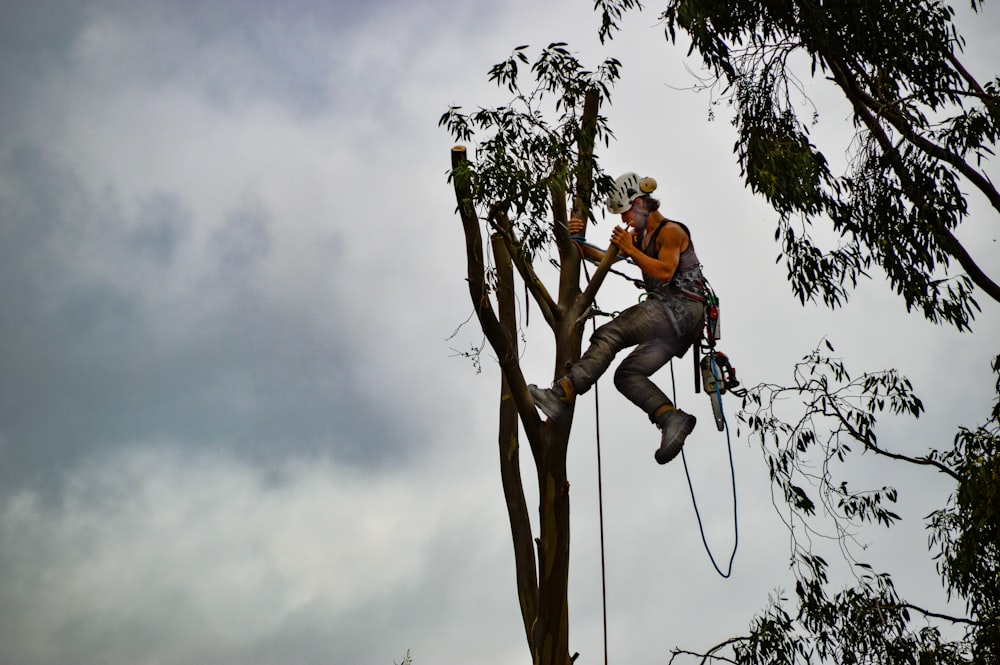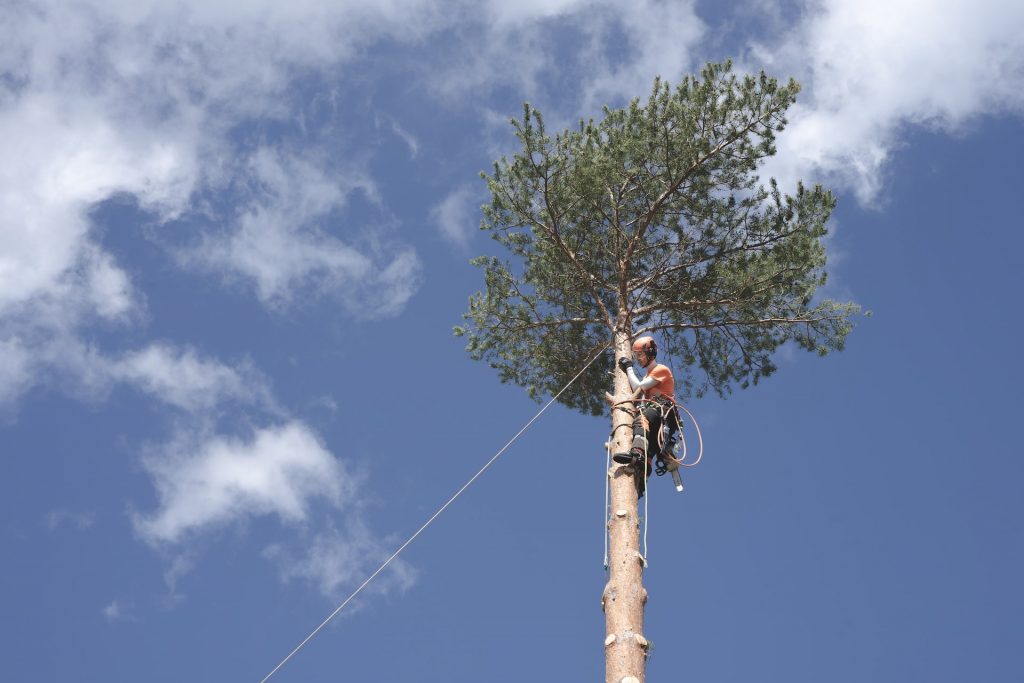In recent times, we have been barraged with information about climate change and how our actions help to either speed it up or slow it down. Between the two, it’s the latter that we want to happen. Of course, we want to save the world and keep it habitable for our future and the generations that will follow. That’s why more people are volunteering in tree-planting projects, but not many people know that this could also be a paid profession.
Table of Contents
What Is An Arborist?
The term “arborist” or “arboriculturist” is not a very common word and it’s also not a very widely-known profession. It came from the root word “arbor” which is a Latin word that means tree. Simply put, an arborist is a person who studies trees; they are also professionally trained in caring for trees.
As professionals in tree maintenance, arborists are also known under different job titles such as tree trimmers, tree climbers, and even tree surgeons. The job may sound a little bit similar to a forester. The difference is that foresters manage a whole forest while arborists only specialize in managing individual trees, which are most often not in a forest but in the city.
Are you currently looking for a job? Read our article about Successful Job Hunting With These Entry Level Help Desk Jobs.
What Does An Arborist Do?
Look up and look for the arborist at work. Source: unsplash.com
Job Description Of An Arborist
Arborists usually work for different firms and companies, but some also have their landscaping businesses. One of their main jobs is to keep tree parts from growing into places that might be damaged and/or pose risks to the public. These places include roads, sidewalks, buildings, and power lines. To do this, arborists trim and prune trees and remove some roots.
As tree surgeons, they are trained to help in improving the overall health and enhance the appearance of trees. If a tree is not at its best, their training would allow them to identify the causes, ranging from invasive species to decaying roots and environmental changes. Once identified, they are expected to recommend proper treatment. They also do these treatments themselves to nurse the tree back in good shape most of the time.

Just a normal day in the life of an arborist. Source: Pixabay
Arborists Are More Than Just Gardeners
So far, an arborist’s job doesn’t seem that difficult; just some trimming and pruning and you might be thinking that anyone with garden shears can do that.
But in this fast-paced world we live in, people have built some construction in some areas where trees are growing. In these scenarios, only trained arborists would know how to relocate entire trees without damaging them in the process. And that’s not something anyone can just do.
It might seem odd – especially as we are becoming more aware of the importance of nature – that a tree has to give way to the construction of another restaurant, shopping mall, or whatnot. But, this is the world we live in, and modern problems require modern solutions.
If trees are growing on land where a new skyscraper needs to be built, the tree has to be safely moved. In that way, nature and our modern way of life can coexist – or at least that’s what we are encouraged to believe in.
Tools Used In A Normal Day At Work
Besides using garden shears for pruning and trimming, arborists also use different tools to maintain the health and appearance of trees. Most of the time, they use electric saws to cut decaying roots and low-hanging branches off. If the situation calls for it, they would need ladders to hoist themselves up to perform tree maintenance.
If trees have to be completely relocated, they need trucks and/or tractors to move the trees from point A to point B. Point B would most likely be a place where trees can grow peacefully or purposefully to prevent soil erosion, road destabilization, and flooding.
The new locations of these trees would need to be carefully selected by arborists. This is necessary to provide biodiversity and also help in absorbing carbon dioxide and cooling urban areas.
Arborists spend the majority of their time working outdoors for obvious reasons. Also, they have to work in all kinds of weather conditions and be exposed to harmful things like pesticides, fertilizers, insects, power lines, and more. When they use a power saw, they must wear gears like hard hats, earplugs, and goggles that will protect them from any burns and cuts.
A Normal Day In The Life Of An Arborist
Because there are different kinds of trees in every region of The USA, the jobs they are expected to do vary. But in general, there are things that most arborists are familiar with. Here are some of them:
- Planting trees, of course.
- Transferring seedlings to more desirable locations where they will grow better.
- Pruning or trimming trees for health and aesthetic reasons.
- Identifying any health problems and their causes and solutions.
- Knowing which pesticide would work best if there are any pest problems.
- Applying the right kind and amount of fertilizers to the soil.
- Keeping a record of trees and necessary paper works for each.
- Operating some tools like a chainsaw while on higher ground.
- Communicating with clients and other arborists if needed.
- Responding to some emergencies like forest fires, storms, floods, and the likes.
- Researching about the latest in tree maintenance.
- Keeping up with the latest technologies and information about tree management.
So while the job of arborists has similarities with the things that gardeners and foresters do, they’re all very different jobs. Being an arborist can be very difficult and requires endurance and a lot of hard work.
WATCH VIDEO: A Day In The Life Of An Arborist
Are you interested in a different career? Check out Paralegal Jobs Near Me.
The Average Salary Of Arborists
If you’re still reading at this point, then it looks like you’re keen on being an arborist. It is an exciting job, after all, and it has its perks, as well. The salary is one of the perks of doing a job that maintains trees, besides the fact that it could save our future. While it is not one of the best-paid jobs considering some risks, the pay rate isn’t that bad. So, how much do tree trimmers make?
Based on Bureau of Labor Statistics data, certified arborists working for the federal government can earn an average of $53,510, annually. The ones working for the local and state governments make an average salary of $41,770 and $41,200, respectively.
There are also different types of arborists like we mentioned. And jobs that require more training, skills, certification, and stamina like the ones who climb tall trees have, of course, pay better. Climbing arborists (yes, that’s the job title) have a higher salary, possibly compensating for the trees’ height and climb and the risks involved. Their annual earnings range between $44,500 to $79,500.
While most arborist job positions are seasonal and can get more demanding during the warmer months of the year, the American government is predicting an 18% growth for the job. As we previously stated, planting trees are becoming more mainstream for all the right reasons. So this growth rate is only natural since more people are planting trees and more cities are becoming greener.
Do you think being a lawyer might be your true calling? Check out our concise guide to this career path.
How To Get Started As An Arborist
To start it off with a piece of good news: in most states, there is no formal educational requirement to become an arborist. A bachelor’s degree in forest science or any related field is considered formal education. After getting a degree, having related work experience as a landscape architect, forester, and the likes might help you land a job faster.
Arborists usually drive to several locations in a day where some tree-pruning, branches-cutting, and tree-relocating are needed. With that being said, a driver’s license would be helpful.
Another credential that arborists need to pursue is a specialized International Society of Arboriculture (ISA) certificate to help them further their careers in the industry. Each certificate will show its specialty in a specific branch of arboriculture. Below are the certifications and the requirements to get each:
ISA Certified Arborist
To earn this, arborists must have training and experience in all arboriculture aspects. Before being eligible to take the exam for this certificate, an arborist needs at least three years of experience in arboriculture and/or a related degree. Some of the skills they need to be eligible for this certification include storm response, electric utility vegetation management, and program management.
ISA Certified Arborist Municipal Specialist
Arborists with this kind of certification would usually specialize in municipal arboriculture or urban forestry. They need three or more years of related experience caring for trees in urban settings like parks and sidewalks. Additionally, they need training for risk management and municipal policy planning.
ISA Certified Tree Worker Climber Specialist
As the name suggests, an arborist looking to get this kind of certification must be able to climb trees. Of course, trucks with ladders will be available for use, but having the endurance to climb trees to get the job done is a requirement. Training in aerial safety and rescue, first aid, and CPR are also necessary to acquire this certificate.
ISA Certified Tree Worker Aerial Lift Specialist
The ability to use an aerial lift is the main requirement to get this certificate. Arborists aiming to get this need the same kind of training required of a tree worker climber specialist like aerial safety, first aid, and CPR.
ISA Board Certified Master Arborist
Being certified as a master arborist means that the candidate has the highest level of ISA certification. To earn this certification, training in scenario-based settings, passing extensive exams, and abiding by the Code of Ethics is required.
WATCH VIDEO: A Day In The Life Of A Tree Surgeon
Some Advice For Aspiring Arborists

Arborists should be passionate about trees. Source: unsplash.com
Choosing this career path may be ideal for people who love being outdoors in nature and earning a proper living wage. But arborists who become truly successful and feel rewarded by this job are the ones who are truly passionate about trees. They are in it not just for practical reasons or financial gain but also because they see trees as an essential part of our existence.
Understanding the importance of trees and that they need the same care as that of a human is what sets apart expert arborists from the rest in this profession.
Possessing the right skills and qualifications is important, but having the drive to help trees and maintain the beauty of the world we live in will help in becoming a better arborist. Furthermore, acknowledging this beauty and the gift of being in the position of maintaining it is a rewarding feeling. And that is the side of this profession that people should see.
Robin Sharma once said, “Every master was once a beginner and every pro was once an amateur.” So, for some aspiring arborists, you might start as a job seeker who thought it will be interesting to work in this field, but eventually, you will get to a point when it’s more than just a job. It is also our future you’re working hard for. When you get there, it will feel more fulfilling and you will reap what you sow, knowing that it’s for the future of the world we live in.

